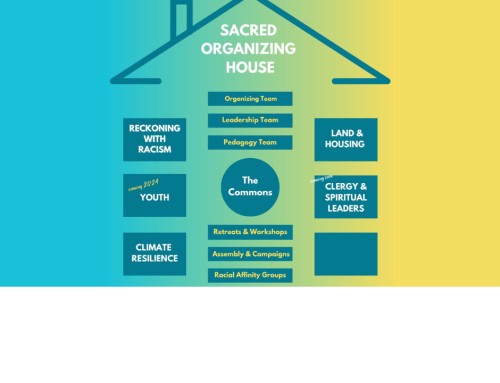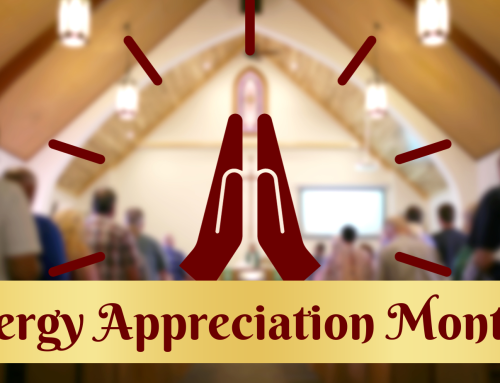My friend Ray died last week. I’m still in shock.
We are living in crazy, bewildering and uncertain times. Thanks to this pandemic, we are grieving en masse, together as a culture: the spring we thought we’d have, the long term future we each thought we’d be walking into, whatever financial stability we’d had, and the scent and texture of flesh as we hug a friend, a young nephew, a co-worker. Few of us have any experience in this. We are, together and apart, doing something new; we are each bearing the reality of an unstoppable tsunami of illness moving to engulf our cities, our schools, our homes. We are bearing the weight of this, meanwhile, within the surreal bubble of physical isolation imposed upon us for the sake of community health. All that is grief enough – exhausting, debilitating, confusing, and sometimes quietly terrifying.
And the truth is, as we’ve heard from our local epidemiologist – many of us will likely lose a close loved one even if we ourselves survive this pandemic. Or, as the weeks turn to months, we will lose a friend or family member through some other kind of death; cancer and heart disease will continue to have their way with us. My friend Ray was only 44 years old. He died unexpectedly not of COVID-19 but of a heart attack early on a Sunday morning. He was fun, curious, kind and full of health and vitality. For the foreseeable future, his husband, friends and I will be unable to process our grief in familiar ways – with an immediate funeral with pews packed, songs sung, prayers prayed, led by spiritual elders, friends and family in a worship space somewhat familiar to us. We will not join in a memorial service with close family in a velvety funeral home or on the concrete patio of a great uncle’s backyard, or grieve through the physical comfort of being in a dark room with relatives at a wake full of singing, whiskey, and story, or mourn at a graveside full of somber remembrances, flowers, earth, and tears.
I’m writing this for any of us who will lose someone in this COVID season. Here are a few tips for grieving at home and online until we can mourn together again, in person.
My father died when I was 42. Daniel – a big, bold lion of a man reduced to a thin- voiced skeletal presence in a manner of months. He’d been, at many points in my life, my rock, my coach, my teacher, my encourager, my critic, and my number one fan. I could hardly breathe that spring; something in me had snapped. I am a Lutheran minister, but the Christian funeral and burial held for him was merely one small step in my grief. I needed more.
Fortunately, I could see my own deterioration, and the sisters of St. Gertrude’s Monastery in Cottonwood, Idaho had space in their retreat house to take me in. So I hit the road from Portland, driving for hours through the glorious waterfalls of the Columbia Gorge, the stately dignity of the wheat fields in the high desert, and finally hitting the lonesome fir and pine forests surrounding the Snake River.
St. Gertrude’s sits like a stone castle erected near what the Nimiipuu, the Nez Perce Tribe, refers to as the center of the universe. Its massive red-domed edifice lies tucked under a hill that overlooks the immensity of the golden Palouse Country to the west and the dusty blues and greens of the rising mountains to the east. The sisters have been praying on that site for over 100 years. Few of them are young anymore. When they gather, their faces betray roadmaps of wrinkles and their bowed heads a white-haired comfort in their own embodied finitude.
Like Benedict, they know death. “Keep death ever before your eyes,” the saint wrote in his rule in 516 CE, an age of infant mortality, short lives, hard labor, and numerous diseases. Benedict knew that holding tight to the reality of our ultimate demise invites us into a deeper treasuring of life, and an honoring of the gift of our very being.
Somehow I sensed it – resting in the presence of the sisters’ ancient and gentle prayer was the perfect place for my sorrow. I slept, walked, prayed, cried, read mindless fiction, filled dozens of pages in my journal, and began to find myself again. One of the oblates, a younger, outdoorsy laywoman who ran the retreat center, saw my grief and encouraged me to join her for a spiritual direction session.
“Why don’t you take a rock,” she said when she’d heard nearly an hour of the gristly guts of my heart. “Find the perfect one. It should be heavy enough to bear your truth, sharp enough to hold the complexity of your relationship with your dad, and smooth enough to carry the warmth he offered. Walk up the rise, past the sisters’ cemetery. Walk until you know you’re alone. Look around. Stand. Sing. Pray out loud to a God who can bear your anger, your confusion, your pain, and your messiness. Dig a hole and bury that rock. Sing or pray some more. Walk down again when you know you’re done. Not before. And you will know.”
I did, I knew, and I was lighter. I could stand up straight for the first time in months. My shoulders eased lower. As I walked down the hill on a rutted old road, I could feel the difference. My lungs held more air.
I’m now a bishop in the Lutheran church, and I should know a thing or two about death, loss, and grief. But, without the encouragement of that wise woman in Idaho, I never would have entered into that space on the hillside. Really, a rock? A song sent into the wind? Messy, ugly tears over a hole with no marker? All by myself on a hillside next to nowhere?
Yup. I learned some things, that spring. We need gatherings, shared songs, and stories. We also, often, need private rites. These solo sacred acts may seem unfamiliar, strange, silly, even, too bizarre for our evolved, post-enlightenment minds. But, symbols can carry stories and letters can hold loss. And private rites, if full of truth, symbol, and authenticity can contain pain, rage, fear, and thousands of seeds of healing.
There is no way around loss. Only through. We’ve all known people who have not been able to fully grieve, whether through a lack of emotional self-awareness, an internalized sense of mourning as “weak” and unnecessary, a loss during childhood with no tools or guides through, a miscarriage or some other death that our culture does not begin to know how to honor, or something else. I have a relative, for example, who suffered what he would call many “shameful” losses in his young adulthood. Over the years he appeared to manage it all, but decade by decade he grew more and more distant, brittle, judgmental and remote, even from his children. His handshake seemed to hold all his rage; it was known all over his tiny rural town – he’d crush you with his grip before he let you pour him coffee. Or an older friend who so avoided the pain from her unspoken miscarriage decades ago that when her own daughter suffered a miscarriage of her own, my friend couldn’t bear being present to her own daughter. Another old friend experienced familial trauma as a young child so foundational that she could hardly be alone with her own thoughts. She continues to surf the surface of friendships, sexual encounters, captivating hobbies and a carousel of new jobs. She is incredibly fun, gregarious and interesting, but may never be happy being truly alone with her self. Her energy drains mine.
As I learned in the lap of the sisters of Cottonwood, I have the capacity, no the tendency, to just get on with it, too. It’s easier to push down my complicated sadness and live forward, toward the future, in positivity and “hope,” avoiding going out into deeper waters. But life and the teachings of sacred scriptures have taught me to know better. When the architecture of our lives has been dismantled, these ancestors say, we often need a guide, a way, a path through the dark and unfamiliar valley of the shadow of death. With the Divine at my side, I will fear no evil. God’s guides and presence, they comfort me. I am never alone.
I know all that. But, I must walk the valley. Or get stuck avoiding it. There is no way around.
The coronavirus may or may not take someone you love. I pray of course that it does not. But if so, or if these weeks hold other unimaginable loss, here are some ways through. Because we all grieve differently, and each loss is unique, take what is useful and ignore everything else. This is your journey.
Shared Gatherings
• Create an online Zoom memorial service – Gather friends and family through email, Facebook, Instagram, or any other means. Find one especially mature, experienced, and kind spiritual leader or friend to facilitate. Invite a few others to read prayers, poems, and holy texts; sing songs, and offer memories. Invite everyone to come to the session with a candle. Any service structure can work, but you may want to begin and end with a prayer (or a nod to the Holy) with candle lighting, and wrap up the sharing time in the center with readings, songs, and prayers. End with a moment of silence, then by blowing out the candles together. Shared singing does not work over Zoom, so find a few with good voices to offer solos or invite all to mute and sing along. Time limits on the sharing are helpful – get a timekeeper just in case. (Take it from a bishop – it’s an absolute disaster when one thoughtless person takes over this sacred time.) Most important: when all are gathered before you on the screen, and before the service begins, take the time to pause, just to take in the faces. Float on their presence with you.
• Host an online wake – If you’ve never been to an Irish wake, you’ve missed a rich way to grieve; sorrow comes wrapped in laughter, whiskey, hugs, tears, and earthy, unfiltered stories. The benefit? A wake might carry less stigma for the religiously suspicious than a memorial service. Maybe you have both, for different audiences. Invite the group to gather over Zoom, to bring a candle and a beverage of any type, perhaps a prepared toast to the memory of your loved one, and buckle in for an hour or an evening of memories. You will learn more than you can imagine about a person you love.
Private Rites
• Create a shrine – This one may be the easiest, inspired by the many and diverse cultures that honor the dead with private shrines. Find an unused corner in your house or apartment and gather tiny tokens that represent the life of your loved one. Begin with a framed photo that reveals your lost one’s true essence. It does not need to be framed – perhaps even better to choose one that invites you to a place of connection instead of the one you’ve had framed but doesn’t reveal a true soul or spirit. Place before the photo things like candles, photos, rings, slips of paper with meaningful words to you both, scripture verses, poems, or maybe a stone from a time at the beach. Perhaps you even write a letter to the deceased. Add elements as feels right. Were they artistic? Add a paintbrush. A bird lover? A feather. Go from there. Keep the shrine up as long as you like, and don’t feel guilty when it is time to dismantle it. By then, it will have served its purpose.
• Write a letter to God – Are you angry with God? Confused? Lost and alone? Write a letter to the Divine – don’t hold back any emotion. God can handle it. Write it on paper, in your own hand, with a pen you like. Make it as long as necessary. Fold it up. Tight! Find a bowl that can handle the heat. Take both outside and burn the letter. Swear, sing or pray, as necessary. Release the ashes. Breathe.
• Find a rock – As my spiritual director at St. Gertrude’s advised, find a rock which somehow can carry the weight and shape of your relationship with your loved one. Smooth relationship? Smooth rock. Complex? Rough rock! Short but intense? Maybe small but interesting! Once you find one – and that may take a time of searching – walk with it. Make sure you walk a meaningful distance; the body needs to grieve. Perhaps you wrap the rock in a poem or scripture written on a sheet of paper, or a piece of cloth. Then, create a ritual as you bury it. Sing. Pray. Read the 23rd Psalm. Talk to your Creator. Breathe.
• Walking mediation – Ancient labyrinths like the one in Chartres Cathedral are useful because they invite us to pray with our bodies and carve out a limited amount of time for the prayer – a sanctuary in time, in other words, to spend in communing with the Source of All That Is. Walking meditation is like this. Perhaps you set one hour, or thirty minutes, for example. The weather does not have to be perfect; just try to avoid a downpour or subzero winds. Walk your local park or the streets of your neighborhood with a mantra (“Into your hands, O God, I release her,” or the name of the person with a few loving words, or a psalm or poem or word). You will find as you go that the words will fit your steps. They may sing in your heart all day.
• Create a book of memories – Are you a collector? A journal-keeper? You may want to create a book as an act of grieving. Gather photos, ticket stubs, or meaningful bits of your life. Add color with crayons or colored pencils. Add words that evoke moments in time. Or find a journal and devote it to your own writing of memories. Poems. Scripture. You do not have to show this to anyone. It’s a process, not a product. If you’ve created a shrine, keep it there.
All of these ideas are meant to help carry you through. We need one another, now more than ever. Please share your own ideas of best practices for walking through grief in the time of COVID.
Bless you!
Bishop Laurie




